The Windsor Ruins are located near the abandoned town of Bruinsburg in Claiborne County, Mississippi, United States of America, approximately 10 miles southwest of Port Gibson. At the site can be seen 23 standing Corinthian columns, which are the surviving part of the largest antebellum Greek Revival mansion ever constructed in the state of Mississippi.
The Windsor mansion was full of life from 1861 until 1890, when it burned to the ground. Today the ruins stand in the middle of dense forest alongside the Mississippi River, but once, there were no trees and the mansion was placed on a 2,600-acre plantation. The plantation mansion was a home of the wealthy planter Smith Coffee Daniell II, who owned countless acres of land in the Mississippi Delta, Arkansas, and Louisiana, and also hundreds of slaves. In its glory days, the four-story structure witnessed many historical events.
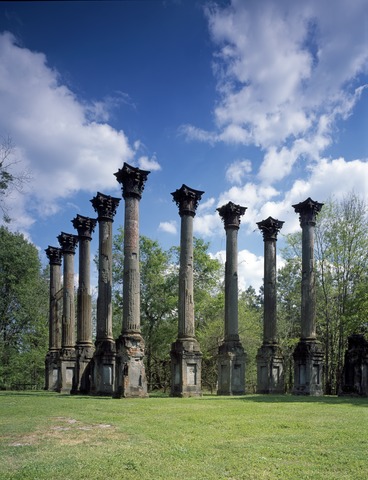
The mansion was built between 1859 and 1861 for the Smith Daniell’s family. He was married to his cousin Catherine Freeland and had six children with her. They put a lot of money and energy into the construction of the mansion. The main architect of the project was David Shroder. The couple also took part in the planning of their new home, but largely it was designed by the ingenious craftsman and erected by the Smith Daniell’s slaves. Schroder hired a great number of skilled workers, like plasterers, carpenters, masons and painters from Mississippi, northern states and even from Europe, to do the fine work on it.
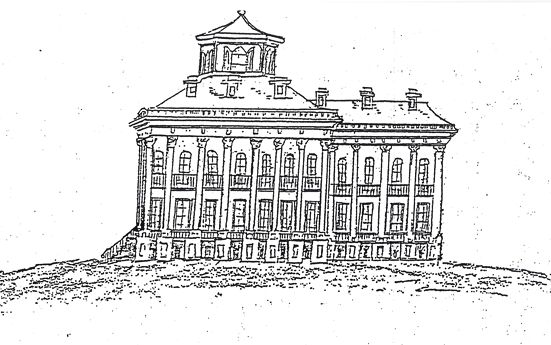
Every corner of the interior and the exterior was carefully decorated to fulfill the wishes of the owners. On the mansion were fused Italianate and Gothic architectonic styles. Once completed, it had 25 rooms with its own fireplace. On the ground floor there were a school room, doctor’s office, dairy and storage rooms. On the second floor were the master room, a bathroom, a study, two parlors, a library and a dining room.
The dining room was connected with the kitchen by a dumbwaiter. On the third floor were located eight more bedrooms and another bathroom. The mansion had a slate-covered roof and eight chimneys. The mansion even had a quite modern novelty: a tank placed in the attic to collect rainwater for use in the bathrooms. The 29 colossal columns were constructed of bricks produced in a kiln located at the site and covered with stucco. Ornamental iron Corinthian capitals were placed at the top of the columns.
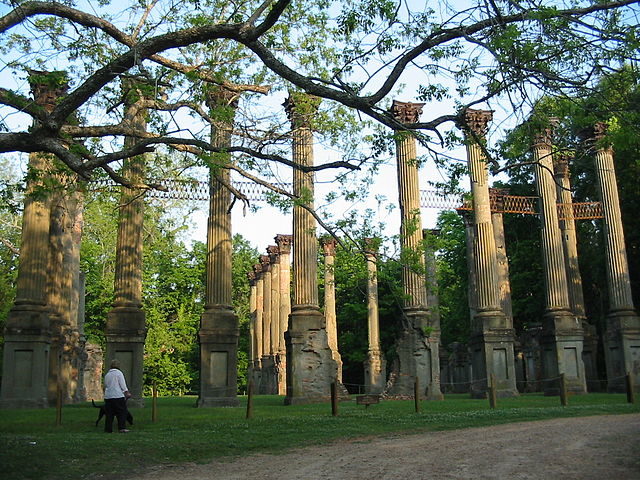
The columns were connected at the hight of the third floor by ornamental iron balustrades. The column capitals, the balustrades, and the inner four cast iron stairs were made in St. Louis and transported by ship down the Mississippi River to the Port of Bruinsburg. The rooftop was a domed cupola with glass walls and it was made above the attic and over the main block of the mansion. But Smith Daniell didn’t get enjoy much in his mansion and the view to his endless plantation from the cupola because he died from a mosquito bite (Malaria or Yellow Fever) several weeks after the large mansion was finally completed. The date was April 12, 1861. On the same day that saw the start of the American Civil War.
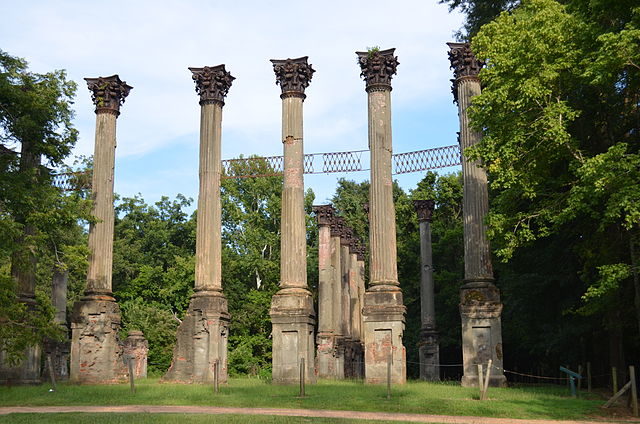
Although the region was hit by the Civil War, the mansion survived untouched. During the war, both Confederate and Union troops used its cupola as an observation post. At first, it was used as a signal station and observation post by the Confederate forces, who practiced guerrilla warfare because of lack of troops and logistics. On April 30-May 1, 1863, General Grant’s Union army crossed the Mississippi River at the port of Bruinsburg to start the campaign for the seize of Vicksburg and took control of the mansion. One Union soldier was shot in front of it. The property was also along the route of Grant’s army on its march toward the city of Jackson. During this time it served as a Union hospital and observation post, thus sparing it from being destroyed by Union troops. The Daniell family was allowed to live on the third floor during the war.
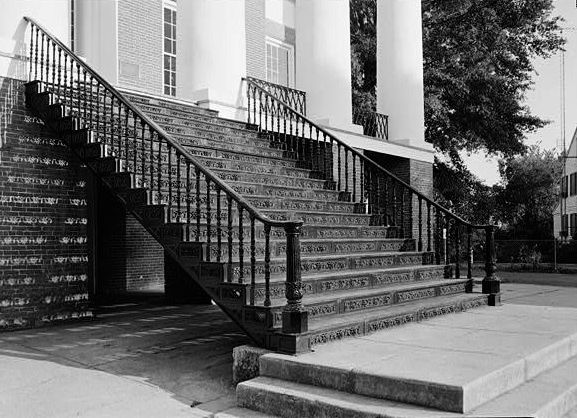
After the war, Mark Twain used the cupola to watch the Mississippi River. In his memoir Life on the Mississippi, he wrote some words about the Windsor mansion. But, unfortunately, during a party in February 1890, one careless guest left ashes from cigar which started a fire that destroyed the house almost completely. Only 23 columns, the grand stairs, and other iron ornaments were left. Later, because of financial crises, the successors of the property sold the stairs and some of the ornaments. Today the stairs are located at Oakland Memorial Chapel on the campus of the nearby Alcorn State University, where they are still in use. The family had the property until 1974 when they donated it to the Mississippi Department of Archives and History.
